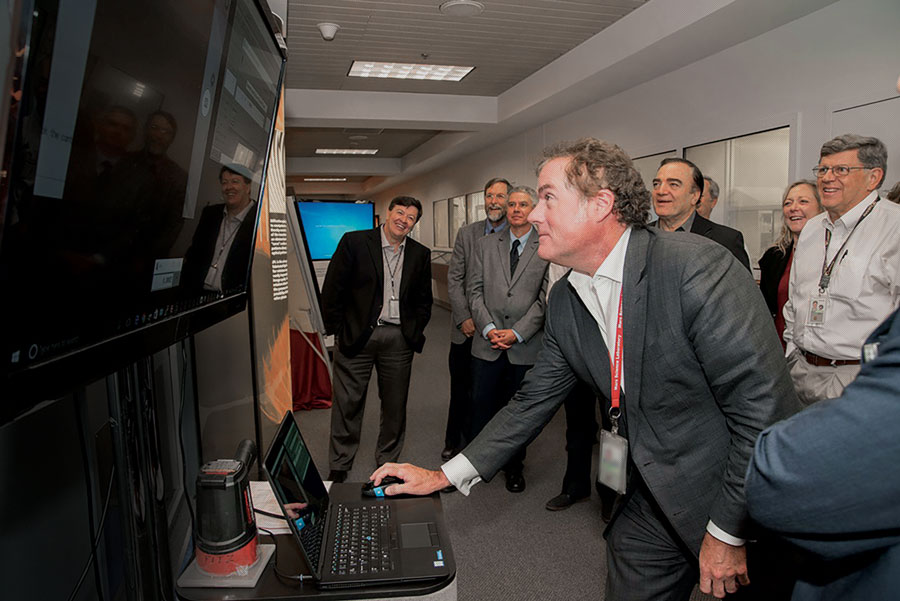



Daniel Wilson PhD in Electrical Engineering, Georgia Institute of Technology, leads the development of electron-beam–fabricated diffractive optics and imaging spectrometer gratings at JPL, including many for airborne and space borne flight instruments. He was awarded the NASA Exceptional Technology Achievement Medal and the JPL Lew Allen Award for his work

The Hyperspectral Thermal Emission Spectrometer (HyTES) is an airborne imaging spectrometer with 256 spectral channels between 7.5 and 12 micrometers in the thermal infrared part of the electromagnetic spectrum...

Led by JPL, Mars 2020 takes the next step in NASA’s Mars Exploration Program, probing the Martian rocks for evidence of past life. The four goals of Mars 2020 are to identify past environments capable of supporting...

The Scanning Habitable Environments with Raman & Luminescence for Organics & Chemicals (SHERLOC) is an arm-mounted, Deep UV (DUV) resonance Raman and fluorescence spectrometer...

Up to half the size of a football field, a starshade would journey into space as a companion to a telescope, deploy and unfurl its “petals”, and fly in formation up to 50,000 kilometers away from the telescope to take position in front of a star of interest...

The vast majority of exoplanets have been detected indirectly by measuring the gravitational tug on their host stars, or by sensing the dip in brightness of that star as a planet transits across our line of sight...

JPL is developing coronagraph technology to enable direct imaging and spectroscopy of exoplanets using the Astrophysics Focused Telescope Assets (AFTA) on the NASA Wide-Field Infrared Survey Telescope (WFIRST)...

The next generation of imaging spectrometers will aim to measure wide swaths of the ground or atmosphere in a single satellite orbit or aircraft flight. This increased swath width requires wide-angle optical systems...

Scientists at MDL have developed a deep gray scale electron-beam lithography and plasma etching process for fabricating three-dimensional surface relief profiles in thick polymer resists and silicon substrates...

Meter-class telescopes comprising adaptive and segmented optics have ushered in a new “golden age” in observational astronomy, and highly light weighted versions of these telescopes for spaceborne applications are under...

MDL completed fabrication of five flight-occulting masks for the James Webb Space Telescope (JWST) Near Infrared Camera (NIRCam) coronagraph. These flight occulters enable detection and characterization of orbiting exoplanets...